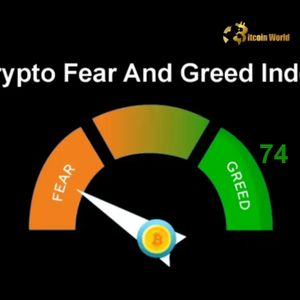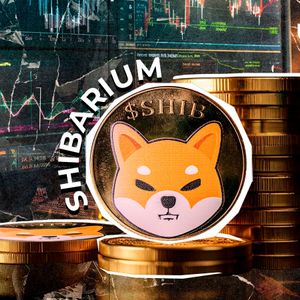BitcoinWorld Crypto Fear and Greed Index Hits 74: What This Greed Signal Means Ever wonder how the collective mood of the crypto market feels? Are investors trembling in fear or buzzing with excitement? That’s where the Crypto Fear and Greed Index comes in. This fascinating tool offers a snapshot of the prevailing emotional state, and as of May 29, it’s painting a clear picture: the market is feeling pretty confident, sitting comfortably in the ‘Greed’ zone at a score of 74. What is the Crypto Fear and Greed Index? Provided by software development platform Alternative, the Crypto Fear and Greed Index is more than just a number; it’s a sentiment gauge for the cryptocurrency market. It operates on a simple scale from 0 to 100. A score closer to 0 signals ‘Extreme Fear’, suggesting investors are likely panic selling. Conversely, a score near 100 indicates ‘Extreme Greed’, often seen when the market is experiencing euphoria and potentially overheating. Think of it like a market’s emotional temperature check. When the index is low, fear dominates, which can present potential buying opportunities for brave investors following the adage ‘be fearful when others are greedy, and greedy when others are fearful’. When the index is high, greed is rampant, potentially signaling a time for caution or taking profits. How Does the Index Measure Crypto Market Sentiment? The index isn’t based on a single factor but aggregates data from six key sources to get a holistic view of the crypto market sentiment . Each factor contributes a specific weight to the final score: Volatility (25%): This measures the current volatility and maximum drawdown of Bitcoin compared to its average corresponding values over the last 30 and 90 days. High volatility often indicates a fearful market. Market Momentum/Volume (25%): This compares the current volume and market momentum (strength of trends) to the average values over the last 30 and 90 days. High buying volume and strong bullish momentum usually point towards greed. Social Media (15%): Analyzes posts and hashtags on social media platforms, particularly Twitter, for keywords related to cryptocurrency. A high volume of positive or overly optimistic posts can signal greed. Surveys (15%): Polls are conducted weekly (though currently paused) to gather investor sentiment directly. This provides a direct, albeit potentially biased, view. Bitcoin Dominance (10%): This measures Bitcoin dominance , which is Bitcoin’s share of the total cryptocurrency market cap. An increase in Bitcoin dominance can sometimes indicate fear (as investors might retreat to the perceived ‘safer’ asset) or strength in Bitcoin leading the market. The index uses it as a gauge of market stability and confidence. Google Trends (10%): Analyzes Google search queries related to Bitcoin and other cryptocurrencies. Rising search interest for terms like ‘Bitcoin price manipulation’ might signal fear, while terms like ‘buy Bitcoin’ or ‘crypto bull run’ could indicate greed. By combining these diverse data points, the index attempts to provide a balanced perspective on the market’s emotional state, moving beyond just price action. Understanding Cryptocurrency Volatility and Greed The relationship between cryptocurrency volatility and the Fear & Greed Index is crucial. While high volatility *can* indicate fear (especially sharp drops), sustained upward momentum coupled with high volume often pushes the index towards greed. The current score of 74 suggests that despite the inherent volatility in the crypto space, the dominant sentiment is one of confidence and positive expectation among investors. It’s important to remember that crypto markets are notoriously volatile. A high greed score doesn’t eliminate the risk of sudden price swings. In fact, periods of extreme greed can sometimes precede market corrections as the market becomes overextended. Bitcoin Dominance and Market Sentiment Signals As mentioned, Bitcoin dominance plays a role in the index. Historically, when Bitcoin dominance rises significantly, it can sometimes mean investors are moving out of altcoins and into Bitcoin, which can be a sign of caution or fear during downturns. However, during strong bull runs, Bitcoin often leads the charge, and rising dominance might simply reflect its strength pulling the market up, contributing to a ‘greed’ score. The way the index weights Bitcoin dominance at 10% shows it’s a contributing factor but not the primary driver of the overall sentiment score, which is more heavily influenced by price momentum and volume. The Role of Crypto Social Media in Shaping Sentiment Never underestimate the power of online chatter in the crypto world. The crypto social media component of the index captures the buzz, hype, and sometimes, the panic spreading across platforms like Twitter. When everyone is talking about the next moon shot, posting rocket emojis, and confidently predicting parabolic moves, it’s a strong signal of rampant greed. Conversely, widespread FUD (Fear, Uncertainty, Doubt) is a clear indicator of fear. While social media can be a powerful indicator of crowd sentiment, it’s also easily manipulated and prone to echo chambers. The index attempts to filter this, but it’s a reminder that high social media sentiment contributing to greed should be viewed with a critical eye. Using the Index: Actionable Insights So, the index is at 74, firmly in ‘Greed’. What does this mean for you? It’s a Warning, Not a Directive: A high greed score suggests the market might be getting ahead of itself. It’s a time to be cautious, not necessarily to panic sell everything, but perhaps to reconsider aggressive buying or think about taking some profits if you have them. Consider the Contrarian View: The famous quote attributed to Warren Buffett (though sometimes debated in origin) about being fearful when others are greedy and greedy when others are fearful is highly relevant. A high greed score is when ‘others are greedy’. Combine with Other Analysis: The index is a sentiment tool. It doesn’t tell you about project fundamentals, technical analysis patterns, or macroeconomic factors. Use it as one piece of the puzzle alongside other research. Understand its Limitations: The index is based on historical correlations and current data. It cannot predict the future with certainty. Market dynamics can change rapidly. Think of the index as a useful indicator of the market’s emotional state, which can influence short-term price movements, but not a crystal ball for long-term investment decisions. Conclusion: Navigating the Greed Zone The rise of the Crypto Fear and Greed Index to 74 confirms what many have felt recently: confidence and positive sentiment are currently driving the market. This move further into the ‘Greed’ zone, influenced by factors like market momentum, volume, and positive crypto social media buzz, along with considerations of Bitcoin dominance and cryptocurrency volatility , signals a period where investors are feeling optimistic. While this can be exciting, especially for those holding assets, it’s also a time that historically warrants caution. Markets driven by strong greed can be susceptible to sharp pullbacks. Using the index as a gauge of collective emotion, combined with thorough personal research and a solid investment strategy, is key to navigating these potentially euphoric, yet risky, market conditions. To learn more about the latest crypto market sentiment trends, explore our article on key developments shaping cryptocurrency price action. This post Crypto Fear and Greed Index Hits 74: What This Greed Signal Means first appeared on BitcoinWorld and is written by Editorial Team



















